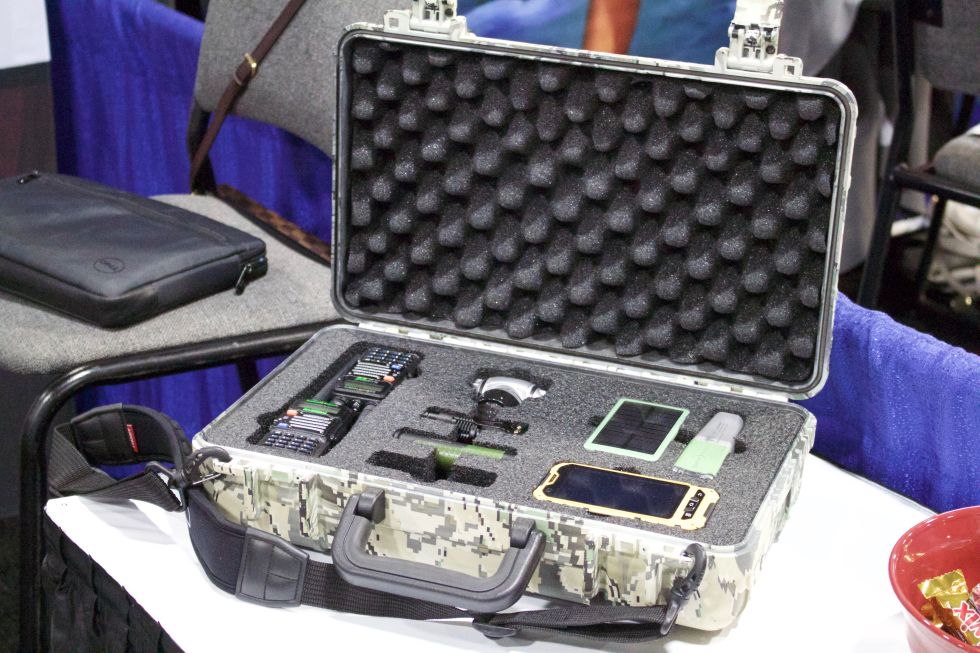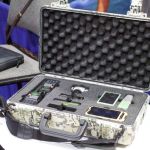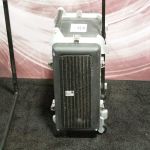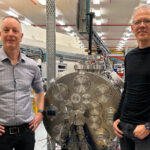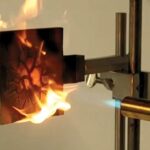A small company from Utah has developed a composite material that combines carbon fibres with a nickel coating. The result is an extremely lightweight electric-conducting material with the properties of plastic.
And now that material is being used to create cases and computer enclosures that are essentially lightweight Faraday cages, containing electromagnetic radiation from digital devices and shielding them from electronic eavesdropping or electromagnetic pulse attacks.
The company, Conductive Composities, is now selling cases built with the Nickel Chemical Vapor Deposition (NiCVD) composite material through its Faraday Cases division. The cases range in size from suitcase-sized units for carrying smaller digital devices to wheeled portable enclosures that can house servers, providing what is essentially an EMP (electromagnetic pulse), shielded portable data center. The cases and enclosures are being marketed not just to the military but to consumers, corporations, and first responders as well.
The materials used in Faraday Cases can also be used to create ultra-lightweight antennas, satellite communications reflector dishes, and hundreds of other things that currently need to be made with conductive metal. They, also, could be a boon to anyone trying to prevent electronic eavesdropping, be it through active wireless bugs, radio retroreflectors used by nation-state intelligence agencies, or passive surveillance through anything from Wi-FI hacking to electromagnetic signals leaking from computer cables and monitors. In some cases, they could make it possible to create the kind of secure spaces used by government agencies to prevent eavesdropping nearly anywhere.
A Faraday cage prevents electromagnetic radiation from penetrating its exterior, protecting whatever is inside from static, electromagnetic pulses, radio waves, and other electromagnetic phenomenon. Faraday cages also work the other way: radio signals and other electromagnetic waves can’t escape from inside the cage. That’s why the Sensitive Compartmented Information Facilities (SCIFs) used by intelligence agencies and the military are constructed within carefully configured Faraday cages, to keep adversaries from eavesdropping and to keep any data within emanations from computers and communications devices inside the SCIF from leaking out. SCIFs are still extremely expensive to build. But the materials used in the Faraday Cases products essentially create small, inexpensive mobile SCIFs. The nickel-coated carbon fibers created by Conductive Composites can be combined with plastic resins and be injection-molded into just about any shape standard plastic can take, at similar weight. As a result, a rolling Faraday Cases computer enclosure weighs about as much by itself as a rolling suitcase.
Conductive Composites’ materials can also be integrated into paints, wallpaper, anche concrete; they could be used to create SCIF-like rooms and buildings without the cost of metal mesh Faraday cages. They could even conceivably be used to set up temporary secure electronic facilities just about anywhere, as well as providing protection from lightning and other sources of electromagnetic pulses (EMPs).
Photo 1’s caption: A Faraday Cases travel case, configured to keep communications gear safe in transit from unfriendly electromagnetism.
Photo 2’s caption: A rolling Faraday Cases server enclosure creates a suitcase-sized secure data center.


